The Book of Abraham: Proving Joseph Smith Was a Fraud
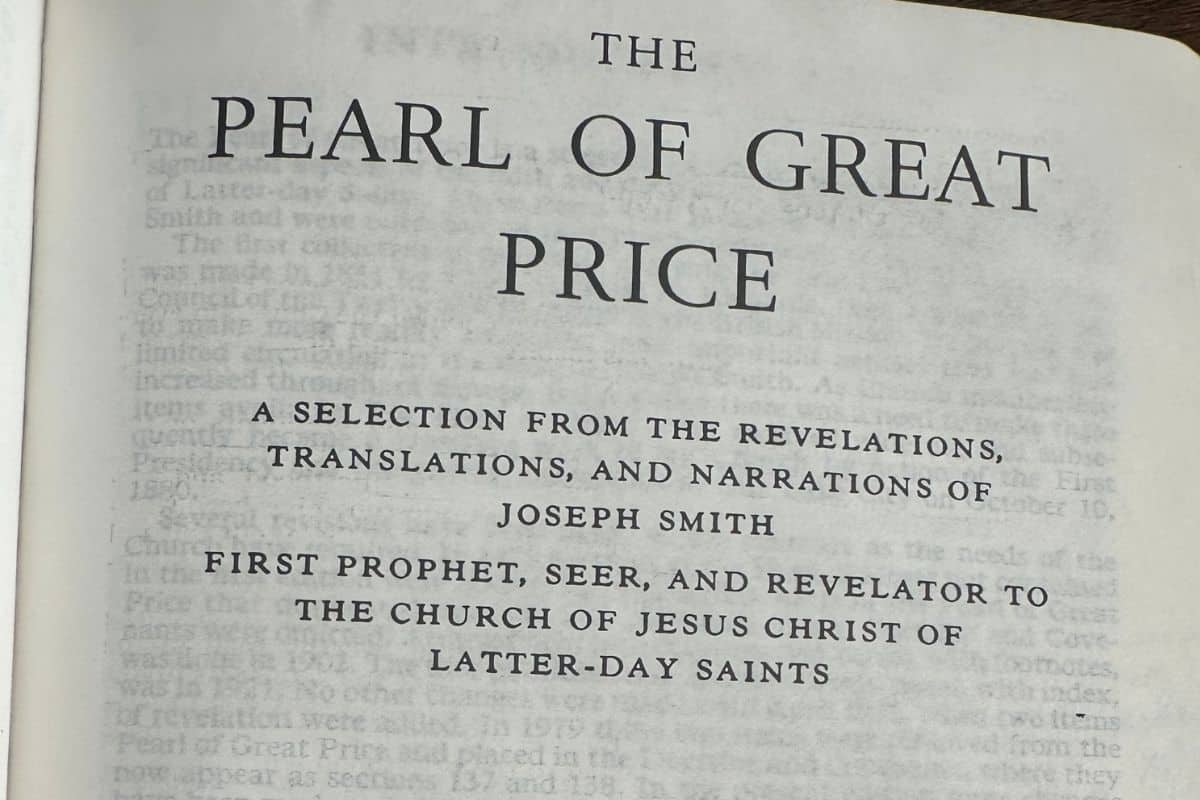
The Book of Abraham is one of the most controversial texts in Mormon scripture and has fueled debates over the authenticity of Joseph Smith’s prophetic claims. Unlike the Book of Mormon, whose “gold plates” were taken back by an angel and remain unseen, the source material for the Book of Abraham—the Joseph Smith Papyri—still exists. This crucial difference allows us to analyze Joseph Smith’s translation claims directly against the original Egyptian texts.
Spoiler: modern Egyptologists universally agree that Joseph Smith’s translation is entirely false. This article dives into the origins of the Book of Abraham, its troubling implications, and why it raises serious doubts about the truth claims of Mormonism.
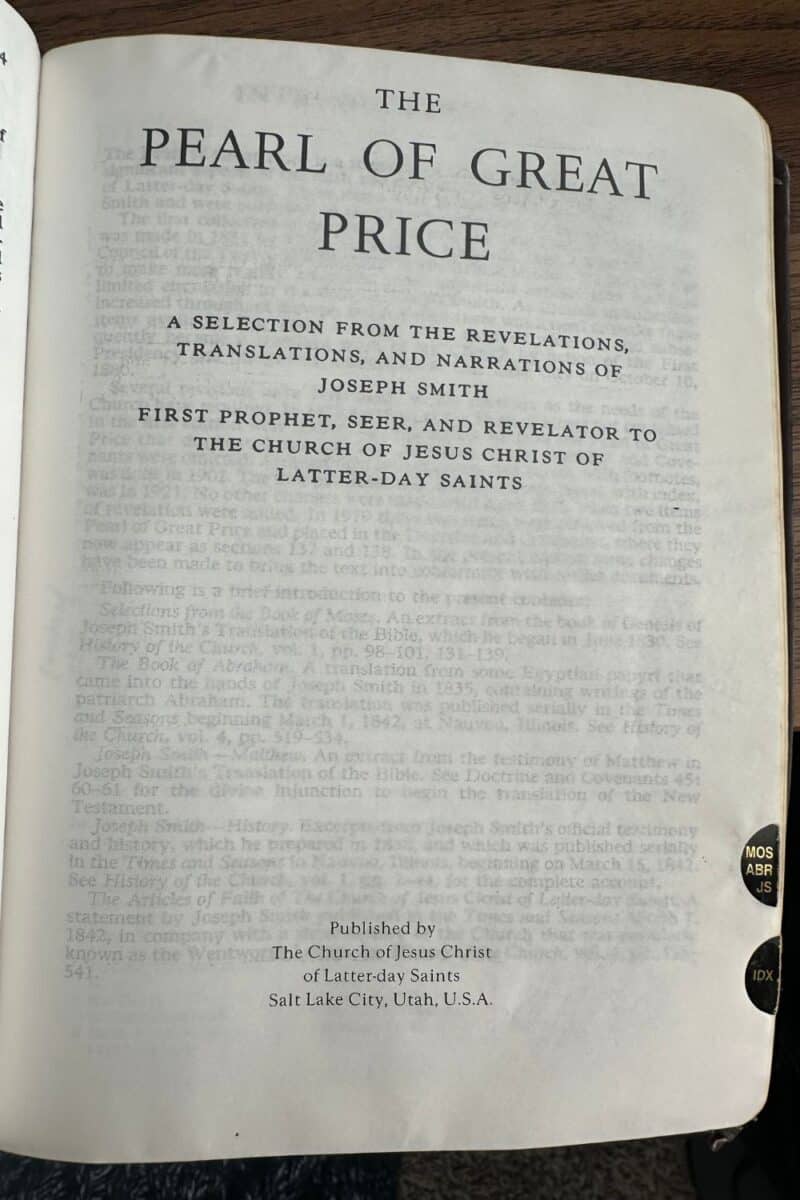
The Origins of the Book of Abraham
The “Sacred” Artifacts
In the early 1800s, antiquities excavators like Antonio Lebolo looted Egyptian burial sites, unearthing artifacts, mummies, and papyri from tombs in Thebes. After Lebolo’s death in 1830, these items were shipped to the United States and sold to collectors. Among them was Michael Chandler, who toured the mummies and papyri across the eastern U.S. in the 1830s.
By 1835, Chandler brought his collection to Kirtland, Ohio, where Joseph Smith purchased four mummies and several papyri for $2,400 (equivalent to about $71,000 today). Smith quickly declared that these papyri contained the writings of biblical figures like Abraham and Joseph of Egypt, even claiming to have discovered a history of an Egyptian princess named Katumin.
A Convenient Revelation
Joseph Smith’s confidence in his ability to “translate” Egyptian texts seemed bold, given that no one in the United States could read Egyptian at the time. However, five years earlier in Europe, Jean-François Champollion had deciphered the Rosetta Stone, marking the start of modern Egyptology. Smith, unaware of these developments, felt safe claiming divine insight as the basis for his interpretations.
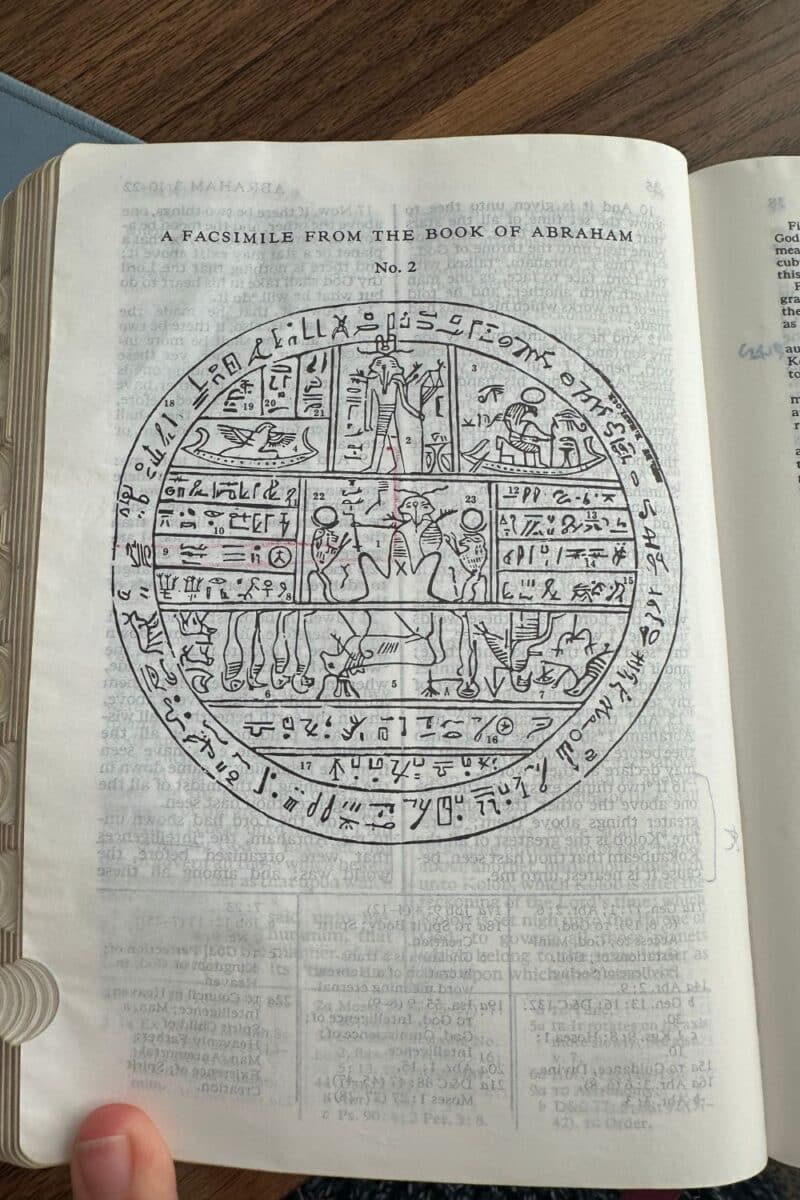
What Is the Book of Abraham?
The Book of Abraham, now part of the Pearl of Great Price, narrates Abraham’s life and his vision of the cosmos. It introduces unique Mormon doctrines, including:
- Pre-mortal existence: The belief that human spirits existed before birth.
- The exaltation of humans: The idea that humans can become gods in the afterlife.
- Kolob: A star near the throne of God, central to Mormon cosmology.
Smith claimed the text was “written by Abraham’s own hand,” despite it being dated to nearly 2,000 years after Abraham’s supposed lifetime. Modern Egyptologists have identified the papyri as common Egyptian funerary texts, specifically the Breathing Permit of Hôr and sections from the Book of the Dead—entirely unrelated to Abraham.
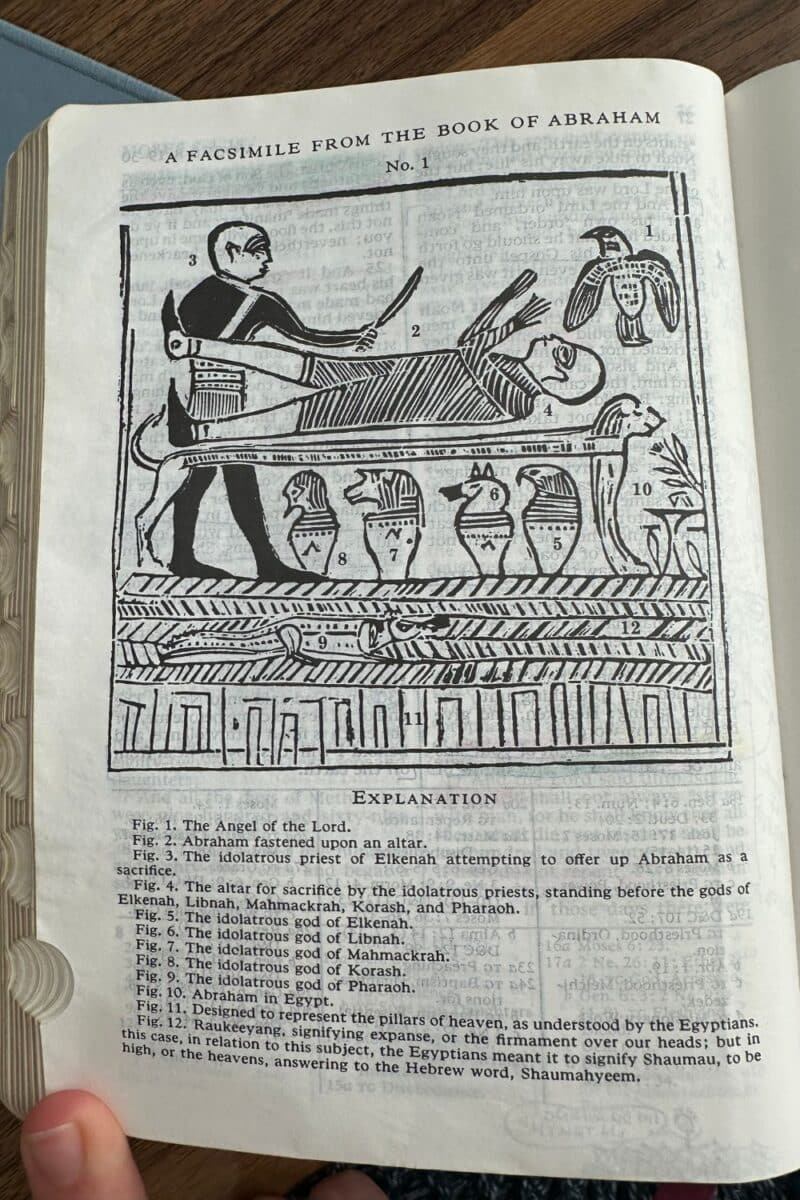
Facsimiles and Translation Claims
One of the most compelling pieces of evidence against Joseph Smith’s claims lies in the facsimiles included in the Book of Abraham. These images, copied from the papyri, were accompanied by Smith’s “translations” and interpretations:
- Facsimile 1: Smith claimed it depicted Abraham being sacrificed on an altar. Egyptologists confirm it shows a funerary scene typical of Egyptian burial rites, with no connection to Abraham.
- Facsimile 2: A hypocephalus (a disc placed under a mummy’s head for protection), which Smith filled with interpretations about Kolob and priesthood powers. Scholars identify it as a standard religious artifact with no such meaning.
- Facsimile 3: Depicted by Smith as Abraham in Pharaoh’s court. Egyptologists recognize it as a common judgment scene from the Book of the Dead.
Comparing Smith’s translations to modern Egyptology reveals that his interpretations were entirely fabricated.
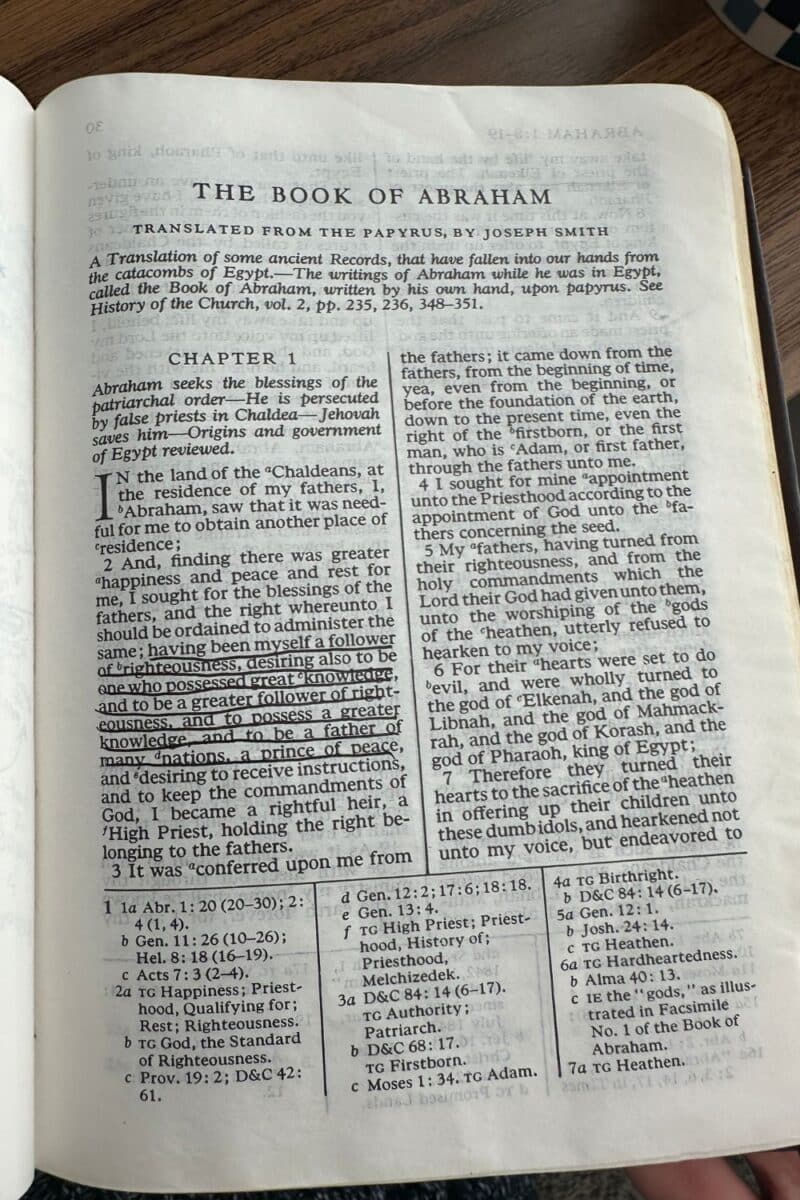
Key Doctrines with Troubling Implications
1. Pre-mortal Existence and Exaltation
The Book of Abraham introduces the idea of a pre-earth life, where humans earned their roles on Earth. This doctrine set the foundation for beliefs about celestial progression, including the potential for humans to become gods.
2. Race and the Curse of Cain
In Abraham 1:27, the text ties the “curse of Cain” to Ham’s descendants, explicitly barring Black individuals from receiving the priesthood. This scriptural justification for racial exclusion shaped LDS Church policy until 1978. Scholars and historians widely criticize the text for perpetuating harmful racial doctrines.
3. Kolob and Mormon Cosmology
The Book of Abraham introduces Kolob, described as the star nearest to God’s throne. While fascinating to some, this cosmology underscores the speculative and non-biblical nature of the text. The idea of Kolob has even been popularized satirically, such as in the musical The Book of Mormon.
What Happened to the Papyri?
After Joseph Smith’s death in 1844, the mummies and papyri passed through various hands. Some were reportedly destroyed in the Great Chicago Fire of 1871, but fragments of the papyri resurfaced in the 1960s at the Metropolitan Museum of Art. Egyptologists confirmed these fragments as common funerary texts, definitively debunking Smith’s translations.
The LDS Church acquired the fragments and published them, inadvertently confirming that Smith’s translations were not only incorrect but entirely unrelated to the content of the papyri.
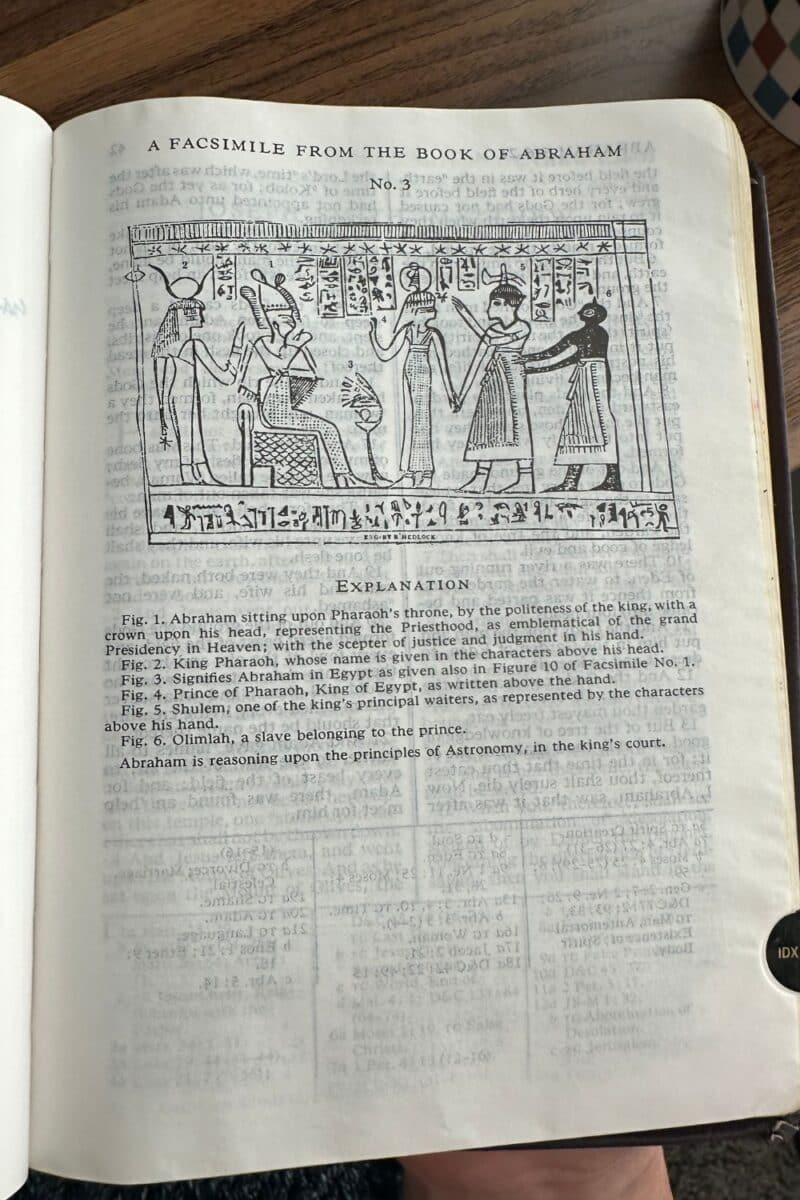
Explaining the “Translation”
The Missing Scroll Theory
Some apologists claim that the actual text of the Book of Abraham was on a “missing scroll” that no longer exists. However, the surviving papyri match the descriptions given in Joseph Smith’s time, making this theory unlikely.
The Catalyst Theory
Another theory suggests that the papyri merely served as a “catalyst” for Smith’s revelations. This approach shifts the narrative from historical accuracy to spiritual insight, but it contradicts Smith’s own claims that he was directly translating the papyri.
Why This Matters
The Book of Abraham isn’t just a relic of 19th-century Mormon history; it’s canonized scripture in the LDS Church. Its demonstrable falsehood calls into question Joseph Smith’s prophetic claims and the foundation of Mormon doctrine. For many ex-Mormons, learning about the Book of Abraham’s origins is a turning point, revealing the Church’s selective storytelling and lack of transparency.
Conclusion
The Book of Abraham offers rare, concrete evidence against Joseph Smith’s prophetic claims. Unlike the gold plates of the Book of Mormon, the source material still exists and can be evaluated. Modern Egyptology conclusively shows that Smith’s translations were fabricated, undermining his credibility as a prophet.
For those questioning their faith, the Book of Abraham poses an important question: how much of your life, time, and money should you dedicate to a belief system with demonstrably false origins? Faith is personal, but when evidence disproves foundational claims, it’s worth reevaluating.








I didn’t know you had a blog, I will start following it. Do you post once a week? If so, what is usually the day?